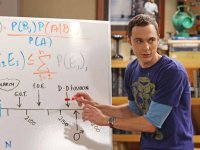Good point. If you think about what is required to get a small lander or orbiter up there, it's a monstrosity.
It really shows how primitive our 'space vehicles' really are.
Like the primitive cars that burned a gallon of gas to just move a mile. Unsustainable in the longer run, just as those giant rockets are, in the longer run, unsustainable.
Time for innovation!
Jan
It really shows how primitive our 'space vehicles' really are.
Like the primitive cars that burned a gallon of gas to just move a mile. Unsustainable in the longer run, just as those giant rockets are, in the longer run, unsustainable.
Time for innovation!
Jan
Time for innovation!
I'm working on my cavorite formulation, Jan! 😀
By the proverbials, probably.... 🙂How does almost 40 meganewtons of thrust grab you, Kay?
To be ever so slightly pedantic, we do not need to reach (Earth) escape velocity to reach the Moon. The lunar missions, once they've performed the TLI burn, will decelerate as they travel away from earth, such that if the Moon wasn't there, they would eventually fall back to Earth. They are devised to reach the orbit of the Moon at low enough velocity that they can be captured by its gravity without too much additional thrust.They have to use multiple stages to efficiently leave the earth's gravity. I don't have the math to hand but it's probably easy to find. What I remember is that the math is relatively simple, we did this math at High School to show that multiple stages were a necessity to reach escape velocity when using liquid/solid fuel rockets. It's all about the ratio of the mass of the fuel to it's energy content in relation to the escape velocity for the earth. The moon, have much less gravity than the earth doesn't require a multi-stage rocket to leave it's surface and return to earth. I wonder if our current technology is even capable of building a rocket that can escape the gravity of larger planets in our solar system.
Indeed the early Apollo missions set off on a 'free return trajectory', such that in the case of engine failure they could use the Moon's gravity to send the spacecraft back to Earth, and a small correction burn was required to convert this into a trajectory that would allow it to be captured by the Moon's gravity.
It was interesting to see the velocity data of Artemis I, as soon as the TLI burn finished, the velocity started to decrease.
Last edited:
Ok, thank you now I understand. So the Saturn V's 1st stage thrust was about 35 MN?
What has puzzled me is that our pound is 0.5 kg, which is a mass unit. Before SI, the force unit was kilopond here. But there are afaik British and American pounds as well, all of the three pounds are different.
Best regards!
What has puzzled me is that our pound is 0.5 kg, which is a mass unit. Before SI, the force unit was kilopond here. But there are afaik British and American pounds as well, all of the three pounds are different.
Best regards!
Member
Joined 2009
Paid Member
That makes very good sense and I assume that by the time anything has reached the moon that there is very little 'additional velocity' needed for escape from the earth but no doubt every little bit of energy counts. In the distant future it really does make sense to establish your space industry on the moon if launch energy requirements are so much lower - assuming the cost of operations on the moon can be made reasonable.To be ever so slightly pedantic, we do not need to reach (Earth) escape velocity to reach the Moon. The lunar missions, once they've performed the TLI burn, will decelerate as they travel away from earth, such that if the Moon wasn't there, they would eventually fall back to Earth. They are devised to reach the orbit of the Moon at low enough velocity that they can be captured by its gravity without too much additional thrust.
Indeed the early Apollo missions set off on a 'free return trajectory', such that in the case of engine failure they could use the Moon's gravity to send the spacecraft back to Earth, and a small correction burn was required to convert this into a trajectory that would allow it to be captured by the Moon's gravity.
It was interesting to see the velocity data of Artemis I, as soon as the TLI burn finished, the velocity started to decrease.
In the Apollo days I've leaned that Saturn V's 3rd stage accelerated the vehicle in the TLI burn to the escape velocity of 11 km/s, iirc. Then the vehicle velocity indeed decreased until the point where the earth's gravity equals the moon's. From this point on, six sevenths of the earth to moon distance, the vehicle accelerated again.
Best regards!
Best regards!
It's easier to picture in one's mind if one equates it to going up a steep hill with just enough velocity to reach the top, and having just enough residual momentum to continue over to the smaller downhill slope where the velocity increases again, like a roller coaster for example.In the Apollo days I've leaned that Saturn V's 3rd stage accelerated the vehicle in the TLI burn to the escape velocity of 11 km/s, iirc. Then the vehicle velocity indeed decreased until the point where the earth's gravity equals the moon's. From this point on, six sevenths of the earth to moon distance, the vehicle accelerated again.
Best regards!
Mike
In the Apollo days I've leaned that Saturn V's 3rd stage accelerated the vehicle in the TLI burn to the escape velocity of 11 km/s, iirc.
You recall correctly. After a thorough checkout of equipment in earth orbit, the Saturn V 3rd stage engine reignited and burned long enough to reach the lunar transfer velocity of 25,000 miles per hour, enough to escape earth orbit.
11 km/s is just a shade under 25,000 mph.
So the Saturn V's 1st stage thrust was about 35 MN?
Yes, 33.4 MN or 7.5 x 10^6 lbf (pound-force).
I'm not surprised you were "puzzled" about the "pound" - Wikipedia explains:
https://en.wikipedia.org/wiki/Pound_(force)
I have already done the homework and performed all the calculations:

Simple case of Newton's Second Law, and a Child of Ten knows this. Force= Mass x Acceleration:
https://www.nasa.gov/specials/artemis-i-press-kit/
Saturn V was a 4 stage rocket, this one is not. Surely not Rocket Science? 🙄
Simple case of Newton's Second Law, and a Child of Ten knows this. Force= Mass x Acceleration:
https://www.nasa.gov/specials/artemis-i-press-kit/
Saturn V was a 4 stage rocket, this one is not. Surely not Rocket Science? 🙄
...and a Child of Ten knows this.
I'm sure it's not your intention, Steve, but that sounds as if you're talking down to us.
I'm almost tempted to give you a rocket! 😉
If you get the chance- visit the Kennedy Space Center Museum in Florida. The museum has a Apollo rocket hanging from the ceiling, Lunar Lander and Rover in the museum.
I was in the 6th grade when the NASA astronauts landed on the moon.Just awesome! Standing there in front of the black and white TV, my mom yelled at me to close my mouth. I was fascinated. My best friends parents worked for Rockwell on the lunar lander. It led me to become an engineer.
I was in the 6th grade when the NASA astronauts landed on the moon.Just awesome! Standing there in front of the black and white TV, my mom yelled at me to close my mouth. I was fascinated. My best friends parents worked for Rockwell on the lunar lander. It led me to become an engineer.
Member
Joined 2009
Paid Member
system7, now that you mention it, my mum's old mini could eventually get up to 79 Mph, but instead of taking 7s it took a whole lot longer! In fact, by the time it reached that kind of speed the SLS was already above most of the atmosphere... But my mum's old mini had a cassette player that I bolted underneath the dash and I bet you those astronauts who are going to go up in Artemis III won't have one !
Member
Joined 2009
Paid Member
system7 is a lot smarter than most know, he probably could've done this all when he was 10yrs!I'm sure it's not your intention, Steve, but that sounds as if you're talking down to us.
I'm almost tempted to give you a rocket! 😉
Attachments
Hope this isn't off-topic. As it goes, I was reading the Eagle comic at the Age of Ten. Naturally, I liked the top cover stories about Dan Dare Pilot of the Future. And disliked his adversary The Mekon, who was a bad lot, IMO.
Even had a Dan Dare Rocket Gun.
But thought this one looked a bit rubbish, and never whined at M&F to buy it for me in the interests of Education, of which they always fully approved:

I tracked it down today. It was essentially a Meccano set. I would have been disappointed.
Held together with nuts and bolts. And rather smaller than it looked in the advert. 😡
Even had a Dan Dare Rocket Gun.
But thought this one looked a bit rubbish, and never whined at M&F to buy it for me in the interests of Education, of which they always fully approved:
I tracked it down today. It was essentially a Meccano set. I would have been disappointed.
Held together with nuts and bolts. And rather smaller than it looked in the advert. 😡
Attachments
Last edited:
It was essentially a Meccano set.
It's amazing what you can make with Meccano!
And Revell do an awesome 1/96 scale model of the Saturn V!
Member
Joined 2009
Paid Member
Yes, there are more interesting activities than Meccano when you get past being 10 yrs.It's amazing what you can make with Meccano!
And Revell do an awesome 1/96 scale model of the Saturn V!
I wonder if you had one of those Dan Dare kits if it would now be a collectible worth a pretty penny.
- Home
- Member Areas
- The Lounge
- Artemis - the NASA mission
 !
!

